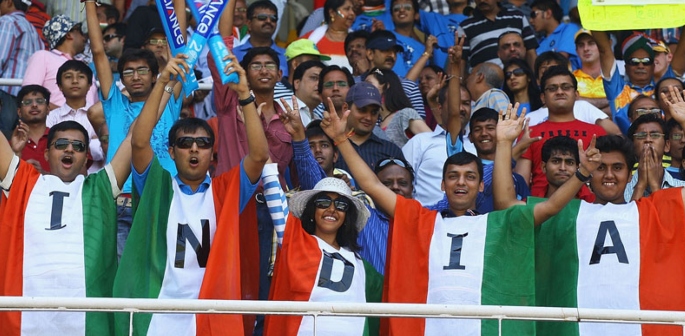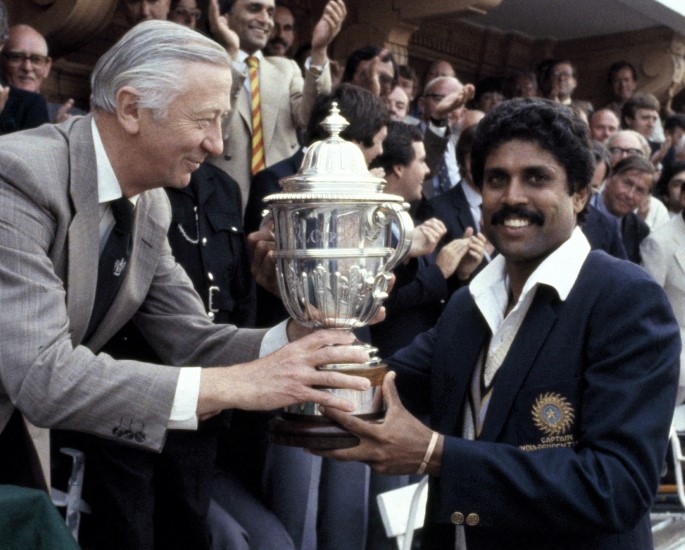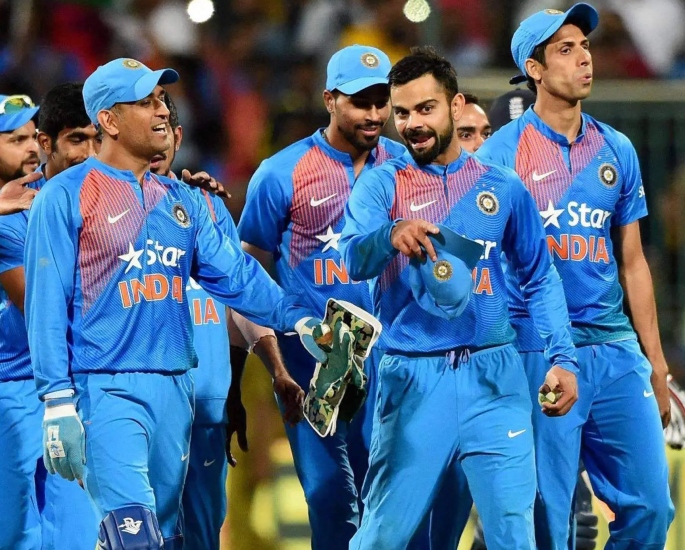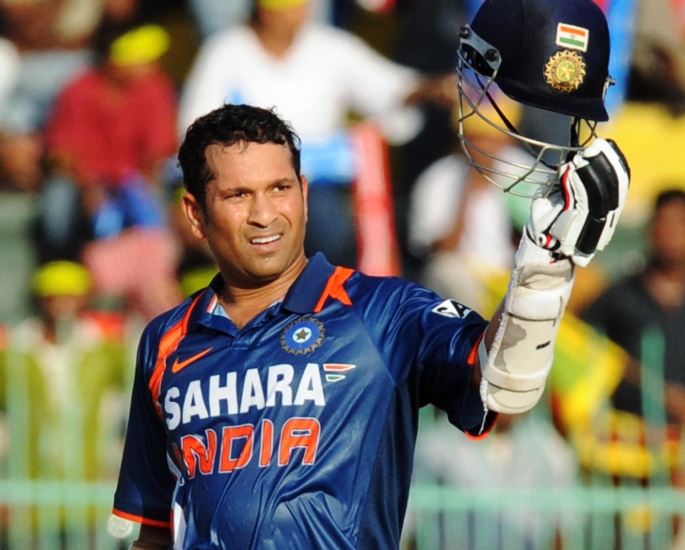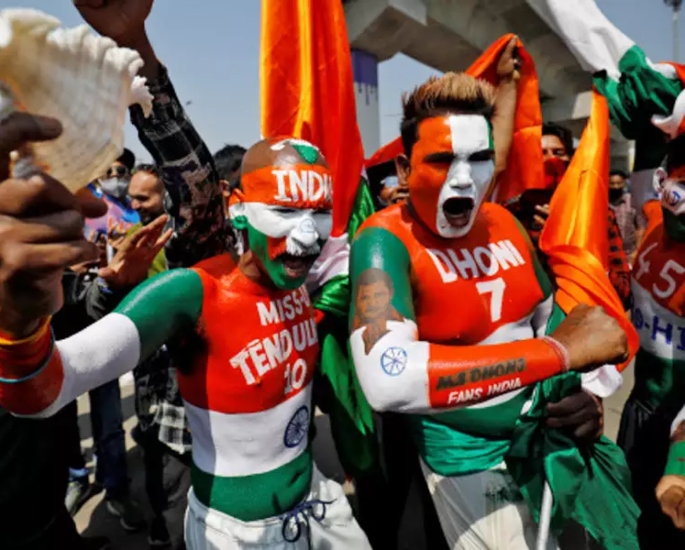The 70s witnessed the rise of legendary players
Cricket is the life and breath of India.
A sport that originated in England has found its truest and most passionate followers in the South Asian country.
The love affair between India and cricket runs deep, transcending mere fandom to become an integral part of the country’s cultural fabric.
From bustling streets to cricket-crazy villages, the sport unites Indians of all backgrounds and regions.
According to research findings, cricket commands the attention of an overwhelming 93% of sports viewers across India.
Furthermore, statistical data reveals that India boasts an impressive count of approximately 3 million registered cricketers.
The nation has hosted more than 19,000 domestic, national, and international tournaments.
To support this thriving cricket culture, India is home to over 2000 cricket academies, centres, and stadiums.
Moreover, India’s rich cricketing heritage is underscored by its accomplishment of hosting over 300,000 cricket matches.
The popularity of cricket in India is unparalleled, and to understand its immense appeal, one must delve into the historical, cultural, and emotional factors that have made it the nation’s favorite sport.
Historical Significance
Cricket’s historical significance in India is a testament to its enduring popularity and deep-rooted connection with the nation.
The sport’s journey in India can be traced back to the colonial era when the British introduced cricket to the Indian subcontinent in the 18th century.
During British colonial rule, cricket was primarily played by the elite class and British officials.
However, it gradually found its way into the hearts of ordinary Indians.
As Indians began participating in the sport, cricket became a platform for asserting their identity and expressing resistance against colonial rule.
It provided a sense of camaraderie and unity, fostering a nascent national consciousness.
One of the most iconic moments in Indian cricket history occurred in 1932 when India played its first Test match against England at Lord’s, London.
Led by the legendary C.K. Nayudu, the Indian team made its mark on the international stage, symbolising a significant step toward India’s cricketing prominence.
The watershed moment in Indian cricket came with the historic victory in the 1983 Cricket World Cup.
Under the captaincy of Kapil Dev, a relatively young and inexperienced Indian team achieved the seemingly impossible by defeating the mighty West Indies in the final at Lord’s.
This triumph captured the imagination of the nation and propelled cricket into the mainstream consciousness of Indians.
It marked a turning point, transforming cricket from a sport played and followed by enthusiasts to a national obsession.
The 1983 World Cup victory had a profound impact on Indian cricket.
It not only instilled a sense of pride and belief in the potential of Indian cricket but also inspired a new generation of players and fans.
The success of the 1983 team, against all odds, fuelled a surge in interest and participation in the sport across the country.
It laid the foundation for India’s rise as a cricketing powerhouse.
In subsequent years, Indian cricket witnessed the emergence of iconic players who became national heroes and inspired millions.
Likewise, the Indian cricket team’s accomplishments on the global stage have further cemented the historical significance of cricket in India.
Triumphs in major tournaments like the ICC Cricket World Cup, the ICC Champions Trophy in 2013, and the ICC World Twenty20 in 2007 and 2021 have brought immense joy and pride to the nation.
These victories have showcased the talent, resilience, and fighting spirit of Indian cricketers and have solidified cricket’s position as the most beloved sport in the country.
Cricket’s historical significance in India goes beyond the sport itself. It represents the spirit of resilience, unity, and national identity.
It has transcended time, cultural differences, and socioeconomic barriers, becoming an integral part of India’s social fabric.
Today, cricket is deeply ingrained in the nation’s collective consciousness and continues to inspire generations of aspiring cricketers and passionate fans alike.
India’s National Team
The Indian cricket team played its first Test match in 1932 against England.
Led by C.K. Nayudu, India faced initial struggles, but their breakthrough came in 1952 when they registered their first-ever Test victory against England in Chennai.
The 60s saw the emergence of Mansoor Ali Khan Pataudi, who became India’s youngest captain at the age of 21.
Pataudi’s leadership laid the foundation for India’s rise as a competitive cricketing nation.
The 70s witnessed the rise of legendary players like Sunil Gavaskar, Gundappa Viswanath, and Kapil Dev.
Gavaskar, known for his impeccable technique and determination, became the first player to reach 10,000 runs in Test cricket.
Kapil Dev’s captaincy led India to its historic World Cup victory in 1983, defeating the mighty West Indies in the final.
India posted a modest total of 183 runs. In a stunning display of bowling, India bowled out the West Indies to win by 43 runs, securing their first-ever World Cup title.
Moreover, the 90s marked a significant era for Indian cricket.
Under the captaincy of Sourav Ganguly, India witnessed a resurgence, with notable victories against top cricketing nations.
In 2001, India’s historic win against Australia in Kolkata, after following on, remains one of the most iconic Test matches in cricket history.
In the 2002 NatWest Series Final, sporting fans witnessed a great comeback from the Indian team.
India faced England in the final at Lord’s. Chasing a target of 326 runs, India found themselves in a precarious position at 146/5.
However, a spectacular partnership between Mohammad Kaif and Yuvraj Singh turned the match around.
With two wickets in hand, Kaif guided India to a thrilling victory, and his unbeaten 87 remains etched in Indian cricket folklore.
Perhaps one of the most historic feats of this Indian team was the 2007 ICC World Twenty20 Final.
India’s victory in the inaugural ICC World Twenty20 was a watershed moment.
Against their arch-rivals Pakistan, India posted a competitive total of 157 runs.
A fiery bowling performance, led by Irfan Pathan and RP Singh, restricted Pakistan to 152, securing a thrilling five-run victory.
This win sparked a craze for T20 cricket in India and paved the way for the establishment of the Indian Premier League (IPL).
In the modern day, the 2010s saw India’s ascent to the top of Test cricket rankings.
Under the captaincy of MS Dhoni, India achieved several milestones, with the most iconic being the 2011 ICC Cricket World Cup Final/
The 2011 World Cup final held immense significance for India.
Playing against Sri Lanka at the Wankhede Stadium in Mumbai, India chased down a target of 275 runs.
The standout performance came from Gautam Gambhir, who scored a vital 97, and captain MS Dhoni, who hit the winning six to clinch the World Cup after 28 years.
The victory ignited celebrations across the nation, with millions of fans rejoicing in this historic moment.
National Heroes and Fan Worship
National heroes and fan worship play a significant role in the popularity and adoration of cricket in India.
The emergence of cricketing legends and their achievements have elevated them to the status of idols and inspirations for millions of cricket fans across the nation.
One of the most revered figures in Indian cricket is Sachin Tendulkar.
Often referred to as the “God of Cricket,” Tendulkar’s career spanned 24 years and left an indelible mark on the sport.
He holds numerous records, including being the highest run-scorer in international cricket and the only player to have scored 100 international centuries.
Tendulkar’s remarkable skill, technique, and dedication to the game made him an icon, not just in India but in the cricketing world.
His success and longevity in the sport captured the imagination of fans, who followed his every innings with bated breath.
Kapil Dev, the captain of the Indian cricket team that won the 1983 Cricket World Cup, is another revered figure in Indian cricket.
Under his leadership, India achieved a historic victory against the formidable West Indies, inspiring a generation of cricketers and fans.
His charismatic leadership and all-round abilities made him an inspiration for aspiring cricketers.
Kapil Dev’s breathtaking innings of 175 against Zimbabwe during the 1983 World Cup is considered one of the greatest one-day innings ever played.
His impact on Indian cricket went beyond the World Cup victory, as he became a symbol of self-belief, resilience, and team spirit.
MS Dhoni, known as “Captain Cool,” is widely regarded as one of the most successful captains in Indian cricket history.
His calm demeanor, exceptional captaincy skills, and ability to finish matches with his explosive batting earned him a special place in the hearts of fans.
Dhoni’s captaincy saw India win the ICC World Twenty20 in 2007, the ICC Champions Trophy in 2013, and the ICC Cricket World Cup in 2011.
His unflappable nature and penchant for leading the team to victory under pressure endeared him to fans, making him a beloved national hero.
Another notable figure is Rahul Dravid was known as “The Wall”.
He is renowned for his impeccable technique and solid defense.
Dravid played a crucial role in stabilising the Indian batting line-up during his career.
His remarkable ability to grind out long innings and his exemplary sportsmanship earned him immense respect from fans and fellow cricketers.
He became a symbol of determination, discipline, and humility, embodying the values that cricket fans in India hold dear.
In addition, one cannot forget about Anil Kumble, India’s highest wicket-taker in Test cricket, was a master of spin bowling.
His relentless accuracy, exceptional control, and remarkable variations made him a formidable opponent for batsmen.
Kumble’s iconic moment came in 1999 when he took all 10 wickets in an innings against Pakistan, becoming only the second player in the history of Test cricket to achieve this feat.
He represented the resilience and fighting spirit of Indian cricket, and his never-give-up attitude endeared him to fans.
Perhaps the standout figure of modern Indian cricket and the face of the nation is Virat Kohli.
Known for his aggressive batting style, unwavering determination, and exceptional consistency, Kohli has carved a remarkable legacy in the sport.
Kohli quickly established himself as one of the world’s premier batsmen, accumulating records and accolades at a remarkable pace.
His batting feats are staggering. He holds numerous records, including being the fastest player to reach 8000, 9000, 10,000, and 11,000 runs in One Day Internationals (ODIs).
He is also the fastest player to score 20,000 international runs across all formats. Kohli has consistently topped the ICC rankings for batsmen, showcasing his dominance and class.
The adoration and fan worship bestowed upon these cricketing heroes in India are unparalleled.
The influence of these national heroes extends beyond their on-field performances.
They have become role models, inspiring countless aspiring cricketers to dream big and work hard to achieve success.
The emotional investment of fans in cricket is palpable, with their reactions to victories and defeats reflecting the deep connection they feel with the sport and its heroes.
The fan worship and adoration for these heroes reflect the passion, loyalty, and deep emotional connection that Indian cricket fans have for the sport and its iconic figures.
Colour, Vibrancy and The IPL
The cultural integration of cricket in India has played a significant role in its popularity and widespread appeal.
Cricket has transcended regional, linguistic, and cultural barriers, uniting diverse communities and fostering a sense of unity and national pride.
One of the key factors contributing to cricket’s cultural integration is the way matches are celebrated as grand events in India.
Cricket has become more than just a sport; it is a spectacle that brings families, friends, and communities together.
From international matches to domestic tournaments, stadiums across the country come alive with passionate fans donning team colors, waving flags, and chanting in unison.
Cricket matches in India are known for their vibrant atmosphere, with spectators creating a carnival-like experience.
The sounds of drums, trumpets, and horns reverberate through the stadiums, and chants and cheers echo across the stands.
Fans often come up with unique slogans, banners, and face paintings to show their support.
This enthusiastic and colourful display of fan culture adds to the overall excitement and creates a sense of belonging and camaraderie among attendees.
The IPL has been instrumental in enhancing the cultural integration of cricket in India.
With teams representing different Indian cities, the IPL has brought together players from various regions and cultures, fostering a sense of unity among fans nationwide.
It has not only showcased international talent but has also provided a platform for young Indian cricketers to shine and make their mark.
The IPL has seamlessly blended cricket with entertainment, creating a unique cultural phenomenon.
The league’s matches are not just about the game; they are extravagant events featuring dazzling opening ceremonies, celebrity performances, and Bollywood glitz.
The amalgamation of cricket and entertainment has attracted a diverse fan base, including those who might not typically follow the sport.
This crossover appeal has expanded the reach of cricket and made it a part of popular culture in India.
Moreover, the IPL has had a significant impact on the economy, tourism, and local businesses.
The league has become a major driver of revenue, attracting sponsors, advertisers, and investors.
Cricket’s cultural integration in India is also reflected in the deep emotional connection fans have with the sport.
Indian cricket fans invest their hearts and souls into supporting their favorite teams and players.
The victories and defeats of the national team or the IPL franchises are felt deeply by fans, evoking strong emotions and sparking nationwide conversations.
Cricket becomes a common thread that binds people from diverse backgrounds, fostering a sense of national pride and unity.
Accessibility and Mass Appeal
The accessibility and mass appeal of cricket in India has played a pivotal role in its popularity and the way it has ingrained itself into the nation’s cultural fabric.
Cricket’s widespread reach and appeal can be attributed to several key factors, one of which is the availability of infrastructure.
Cricket is widely accessible in India due to the availability of cricket infrastructure throughout the country.
From international stadiums to local grounds and makeshift pitches in parks and streets, cricket can be played and enjoyed in various settings.
This accessibility allows individuals from diverse backgrounds and regions to engage with the sport.
Another reason behind its mass appeal is grassroots cricket.
India has a strong grassroots cricket structure, with numerous schools, colleges, and local clubs promoting the sport at a young age.
This grassroots network provides opportunities for aspiring cricketers to develop their skills and progress through the ranks.
The emphasis on school and college cricket helps nurture talent and fuels the passion for the sport from an early age.
Additionally, TV and broadcasting have helped Indian cricket become a phenomenon globally.
The advent of television and the widespread coverage of cricket matches have contributed significantly to its mass appeal.
Broadcasting networks, both national and regional, ensure that cricket matches, including international fixtures and domestic tournaments like the IPL, are accessible to millions of viewers across the country.
Television coverage allows fans, regardless of their location, to follow their favorite teams and players closely.
Moreover, cricket in India goes beyond the professional game.
It is deeply embedded in the social and recreational fabric of the country.
From friendly matches in local neighborhoods to corporate and community tournaments, cricket serves as a means of socialising, bonding, and recreation.
People of all ages and backgrounds come together to play and enjoy the sport, enhancing its mass appeal.
Furthermore, India’s diverse regional identities and rivalries add an extra dimension to the mass appeal of cricket.
The existence of state-level teams and domestic tournaments like the Ranji Trophy creates a sense of pride and loyalty among fans.
Support for regional teams and rivalries between different states further contribute to the mass following and engagement with the sport.
Cricket’s popularity in India can be attributed to a catalogue of reasons.
It has ingrained itself deeply within the Indian psyche, capturing the imagination and uniting a diverse nation.
As cricket continues to evolve and create new heroes and moments of glory, its prominence in India shows no signs of diminishing.
With its unwavering popularity and the passion of its fans, cricket remains an integral part of India’s sporting fabric, embodying the nation’s collective spirit and love for the game.



















































